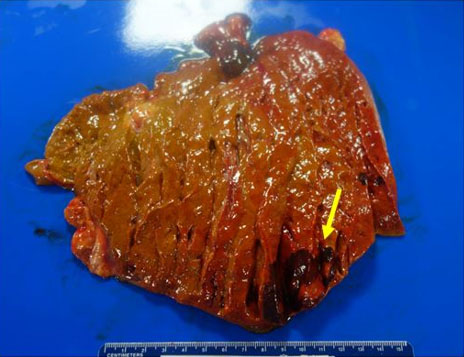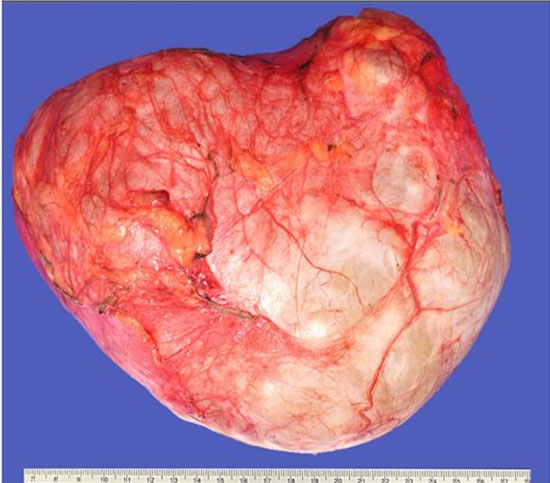 |
Case Report
Metastatic adenosquamous carcinoma with porocarcinoma-like differentiation arising from an ovarian teratoma
1 MD, PhD, Surgical Pathology Fellow, Department of Pathology, University of California San Francisco, San Francisco, CA, USA
2 MD, Associate Professor, Department of Pathology, University of California San Francisco, San Francisco, CA, USA
Address correspondence to:
Cynthia A Gasper
MD, Department of Pathology, University of California San Francisco, 1825 4th Street, M-2353, San Francisco, CA 94158,
USA
Message to Corresponding Author
Article ID: 100086Z11AM2025
Access full text article on other devices

Access PDF of article on other devices

How to cite this article
Mirza A, Gasper CA. Metastatic adenosquamous carcinoma with porocarcinoma-like differentiation arising from an ovarian teratoma. J Case Rep Images Pathol 2025;11(1):13–17.ABSTRACT
Introduction: The vast majority of ovarian mature cystic teratomas (MCTs) are benign with approximately 1% undergoing malignant transformation, typically into squamous cell carcinoma. Rarely cutaneous adnexal malignancies are found in association with malignant transformation of a teratoma and those with eccrine differentiation are exceptionally rare.
Case Report: We report a case of a premenopausal 48-year-old, gravida 1, para 0, unmarried woman with no past medical history who presented with abdominal pain and bloating. A pelvic ultrasound was notable for a 10 cm mass possibly arising from the left ovary and a computed tomography (CT) scan of the abdomen and pelvis demonstrated a pelvic mass and suspected peritoneal carcinomatosis. The initial pelvic mass biopsy was primarily necrotic but showed infiltrative malignant cells. The patient underwent neoadjuvant chemotherapy followed by total abdominal hysterectomy, bilateral salpingo-oophorectomy, partial colectomy, and tumor debulking which revealed widespread involvement by adenosquamous carcinoma with extensive poroid differentiation. Extensive ovarian sampling revealed the adenosquamous carcinoma arose from a mature cystic teratoma. Molecular testing identified short-tandem repeats (STR) that confirmed the teratomatous origin of the primary tumor and metastases along with next generation targeted sequencing showing specific genetic alterations.
Conclusion: Malignant transformation of ovarian mature cystic teratoma is rare and typically in the form of squamous cell carcinoma. Here we present the first case of adenosquamous carcinoma with a porocarcinoma element arising from a mature cystic teratoma with shared oncogenic drivers of YAP1 and p53 in addition to mosaic expression of a TGFBR2 mutant.
Keywords: Adenosquamous carcinoma, Malignant transformation, Teratoma
SUPPORTING INFORMATION
Author Contributions
Amar Mirza - Drafting the work, Final approval of the version to be published, Agree to be accountable for all aspects of the work in ensuring that questions related to the accuracy or integrity of any part of the work are appropriately investigated and resolved.
Cynthia A Gasper - Conception of the work, Design of the work, Revising the work critically for important intellectual content, Final approval of the version to be published, Agree to be accountable for all aspects of the work in ensuring that questions related to the accuracy or integrity of any part of the work are appropriately investigated and resolved.
Guarantor of SubmissionThe corresponding author is the guarantor of submission.
Source of SupportNone
Consent StatementWritten informed consent was obtained from the patient for publication of this article.
Data AvailabilityAll relevant data are within the paper and its Supporting Information files.
Conflict of InterestAuthors declare no conflict of interest.
Copyright© 2025 Amar Mirza et al. This article is distributed under the terms of Creative Commons Attribution License which permits unrestricted use, distribution and reproduction in any medium provided the original author(s) and original publisher are properly credited. Please see the copyright policy on the journal website for more information.





